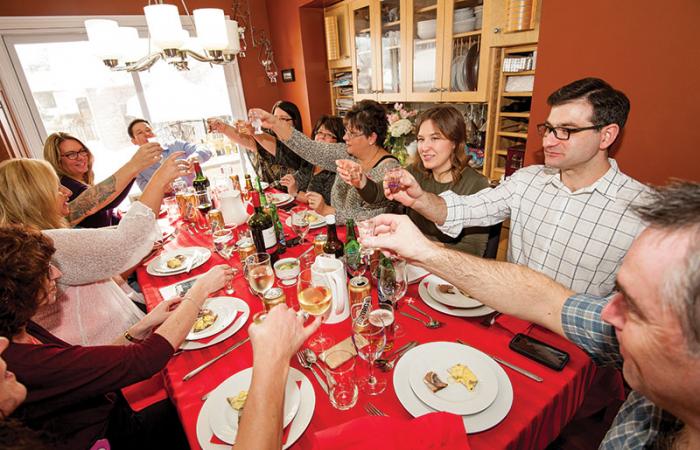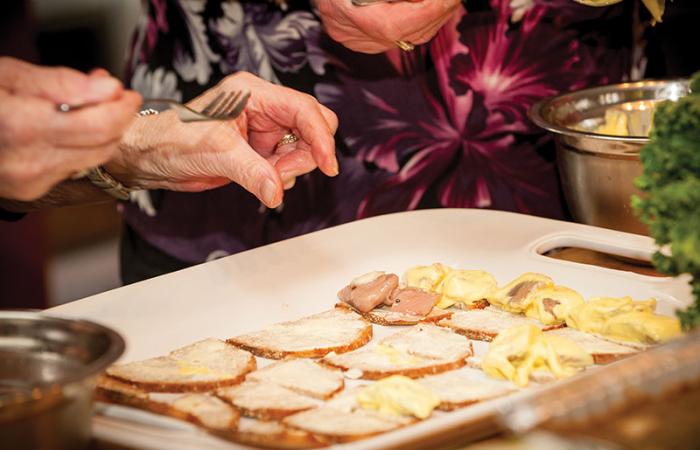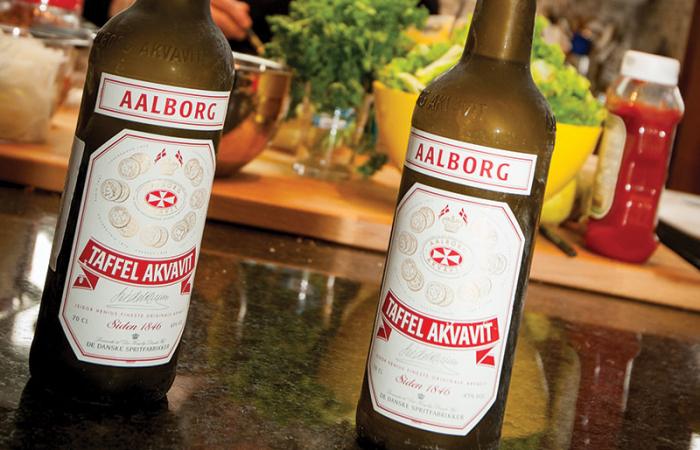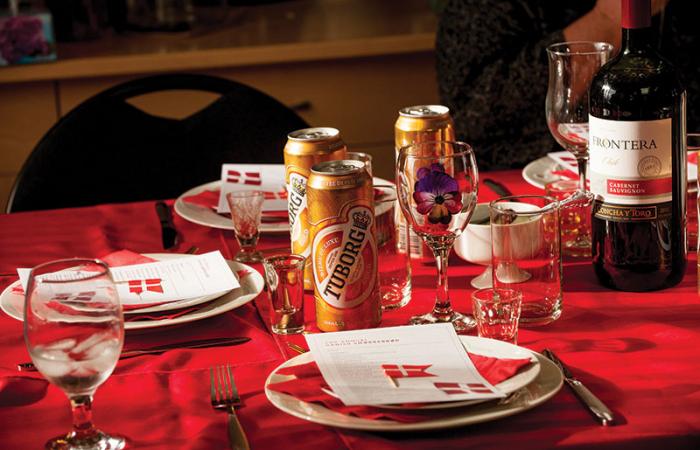The modern sandwich may have been named after John Montagu, 4th Earl of Sandwich, but the Danes are famous for having elevated the open-face sandwich to a culinary art.
Over the years, Danish cuisine has been gaining world-wide popularity, with Copenhagen becoming one of the culinary capitals of the world. One of the most sought after offerings is known as “Smørrebrød”, an open-faced sandwich which the Danes are famous for. The ingredients to these sandwiches are wholesome and simple, but the presentation is carefully orchestrated, providing for an appetizing blend of flavours with many imaginative varieties. Every “smørrebrød” begins with “rugbrød” (rye bread). It is thinly sliced, generously buttered and then finished off with an array of toppings arranged to please both the eye and palate.
In Canada, there are only a handful of traditional restaurants that can be found, so the experience is not easily attainable...unless you have Danish friends. A year ago, friend and foodie Leslie Clarke-Stechyshyn and her mother Karin Hjorth decided to introduce twelve eager Canadian friends to Denmark’s finest custom. The result was a fourteen course tasting that annually celebrates culture, friendship and fine food. If you have yet to indulge in a traditional Danish smørrebrød, then let this be your first introduction.
For the last 1000 years the Danes have made rye bread the staple of their diet, but it wasn’t until the 1840’s when farmers, workers and labourers started creating a luncheon packet featuring different types of flat smørrebrød for their lunches. By the end of the 1880’s smørrebrød turned into a more sophisticated type of luncheon specialty, served in multiple courses and eaten in a formal setting with fine tablecloths and silver cutlery. The very first restaurant to serve these delectable sandwiches was the Restaurant Nimb at Tivoli in 1883. As generations passed, the delectable sandwich slowly made its way into the heart of Danish society. Today the famous Copenhagen restaurant Ida Davidsen’s offers patrons a list of over 200 toppings on their menu. To participate in this tradition be prepared to set aside an entire afternoon, where courses are plentiful, the conversation is delightful and the food is deliberately savoured.
Accompanying this gastronomic extravaganza are both ice cold Akvavit and Danish beer. Akvavit is a Scandinavian spirit distilled by Aalborg that is flavoured with caraway seeds and other herbs. The name is derived from the Latin term “aqua vitae” meaning “water of life” and it has been part of Danish drinking culture since the 1500’s. Diners toast or “skål” between each course taking two to three sips and it is widely thought to aid in digestion of rich foods. Beer has long had deep roots in Denmark with evidence of its production dating back to the Vikings.
In the 14th century beer became the beverage of choice, as clean drinking water was often unavailable in many parts of the country. By the mid-1800’s, clear golden lagers were gaining popularity across Europe and brewers scrambled to meet demand. It is during this time the three largest Danish breweries were founded: Carlsberg, Ceres and Tuborg.
What ingredients may you find on a traditional smørrebrød menu? Fish plays a prominent role in the Danish diet with herring being a particular favourite. Herring has been a preferred fish in their diet for generations and it is prepared in a great number of ways. “Spegesild” (pickled herring) and “Karrysild” (curried herring) are two popular preparations. Other savoury toppings include “Leverpostej” (chicken liver pate), “Rullepløse” (pork sausage) and “spegepølse” (salami). Denmark is one of the world’s largest exporters and consumers of cheese, so varieties such as Danish Cheddar, Danish Blue and Harvarti are always displayed. Each sandwich is accented with a garnish before it is served. Garnishes can range from simple leaf lettuce, parsley, tomato, cucumber, mayonnaise or salad. All courses are served on large platters that allow diners to enjoy the impressive presentation prior to being served.
Partaking in a traditional smørrebrød is an experience not easily forgotten. Danes are serious entertainers, with attention to every detail, right down to the elegant table settings. To enjoy an entire afternoon with friends, food and drink is to embrace the true definition of Scandinavian culture. Celebrated Seattle Times columnist and American historian, William C. Speidel once summed up the essence of Danish cuisine quite eloquently, “It took Vikings many centuries to create the smorgasbord. It brings you the fish of the sea, the meats of the range...the fruits of the land and the wings of the sky in a gracious gesture of hospitality and welcomes you to the meal that follows...”








